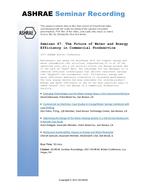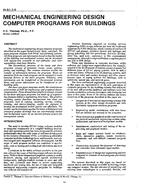Click here to purchase
Efficient air-conditioning concepts play an important role in current and future vehicles, especially in the context of electromobility. Since the seat represents the largest contact surface with the human body, it can contribute to efficient and local cooling of the occupant. The Chair of Ergonomics, Technical University of Munich, in cooperation with Gentherm GmbH, evaluates an intelligent controlled air movement (iMTM – Intelligent Micro Thermal Module1) with Peltier cooling technology. By improving the cooling performance in the seating area, higher air temperatures in vehicle interiors are conceivable. The study presented in this paper investigates the reduction potential in energy consumption during central air-conditioning in a vehicle cabin while maintaining a passenger’s thermal comfort at a high level. The focus of the study is to assess the thermal load, defining limits for comfortable conditions and to evaluate the overall energy consumption for three different seating concepts. A manufactured production vehicle seat without climate control (Baseline) is used as a reference seat while the test seats are production seats with local ventilation (Vent) and a modified active cooling seat with thermoelectric devices (iMTM). During the test scenarios of a subject study, the seats are tested for thermal comfort and sensation under steady-state interior conditions. The results show that the overall thermal comfort and sensation are ‘neutral’ and ‘comfortable’ in all three scenarios. In addition, the energy consumption of the climate control system (HVAC) is compared with target interior temperatures of the seat concepts during a pulldown scenario. The use of an iMTM seat can reduce the cooling capacity of the HVAC by up to 47.29 % compared to the Baseline scenario during a Pulldown simulating a 25-minute drive. These energy savings can increase electric vehicles’ range and provide other benefits such as reducing charging stops and improving fleet efficiency. Additionally, it shows that OEMs can design vehicles with smaller HVAC units or smaller capacity batteries with the same performance in future.
Product Details
- Published:
- 2022
- Number of Pages:
- 11
- Units of Measure:
- Dual
- File Size:
- 1 file , 1.4 MB
- Product Code(s):
- D-IIVC2022-C016
- Note:
- This product is unavailable in Russia, Belarus


